Located between Orléans and Blois in the Loire Valley, the castle of Meung-sur-Loire was originally the country residence of the Bishops of Orléans. Meung Castle, listed as a historic residence by the French State, was successively built between the 12th and the 18th centuries. As one of the Loire’s oldest fortresses, Meung Castle has welcomed illustrious characters from French history across the centuries: Charles the Bald, Francis I, Charles VII, Louis XI, François Villon and Joan of Arc.
Meung Castle: A bit of history
Construction of the castle commenced in the middle of the 12th century under Manassès de Garlande, Bishop of Orléans from 1147 to 1185. He bought the chapter house of the town and two of the Cannon’s houses in order to construct a dwelling on the site flanked by twin towers against the south face of the church bell tower.
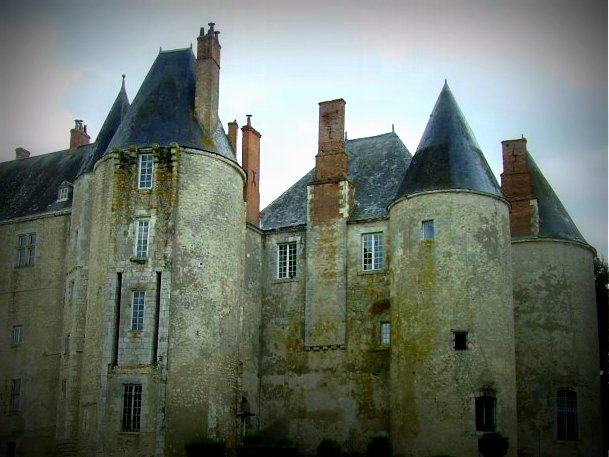
In the 13th century, the bishop of Orléans, Manassès de Seignelay (1207-1221) enlarged the residence by acquiring the land around it. The rectangular dwelling was flanked by four round towers (2 large and 2 small) and housed the guard-room, the lower hall with ribbed vaults and the cellars.
Meung-sur-Loire was occupied by the English during the Hundred Years War and the castle was transformed into a fortress. The site of Meung was a strategic one with the existence of a bridge on the River Loire. After liberating Orléans, Joan of Arc took it from the English on June 14, 1429.
In 1461, François Villon was imprisoned in Meung Castle for theft. He was subjected to the “Question”: torture to obtain a confession. Louis XI had him freed after reading a poem by Villon which he thought was destined for him.
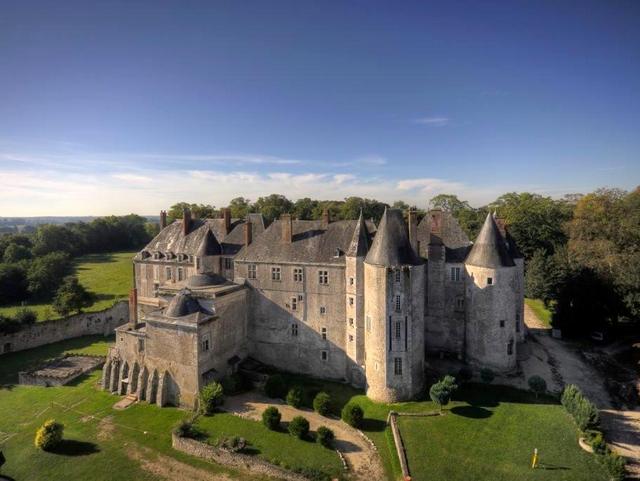
In the 15th century, Meung Castle was a prison for persons convicted by the episcopal justice system whilst ordinary criminal offenders were condemned by the royal justice system.
In the 16th century, the bishops of Orléans doubled the section of the castle that was built in the 13th century on its east side and raised a big entrance tower with a drawbridge for pedestrians. This newly added building was flanked by a small octagonal tower containing a spiral staircase.
From the time of the Wars of Religion to the beginning of the 18th century, the castle was abandoned.
In the 18th century, Fleuriau d’Armenonville (Bishop of Orléans from 1716 to 1733) wished to make Meung castle one of his residences. He added to the 13th-century section of the castle an asymmetrical façade on the rear opening onto the gardens. The new pink-coloured façade was redesigned in Classical style. He reorganised the central part of the main building to layout the main courtyard (Cour d’Honneur). He softened the aggressive look of the flanked towers by removing their machicolation.
In the middle of the 18th century, a wing to the South-East was built with a staircase serving the upper floors.
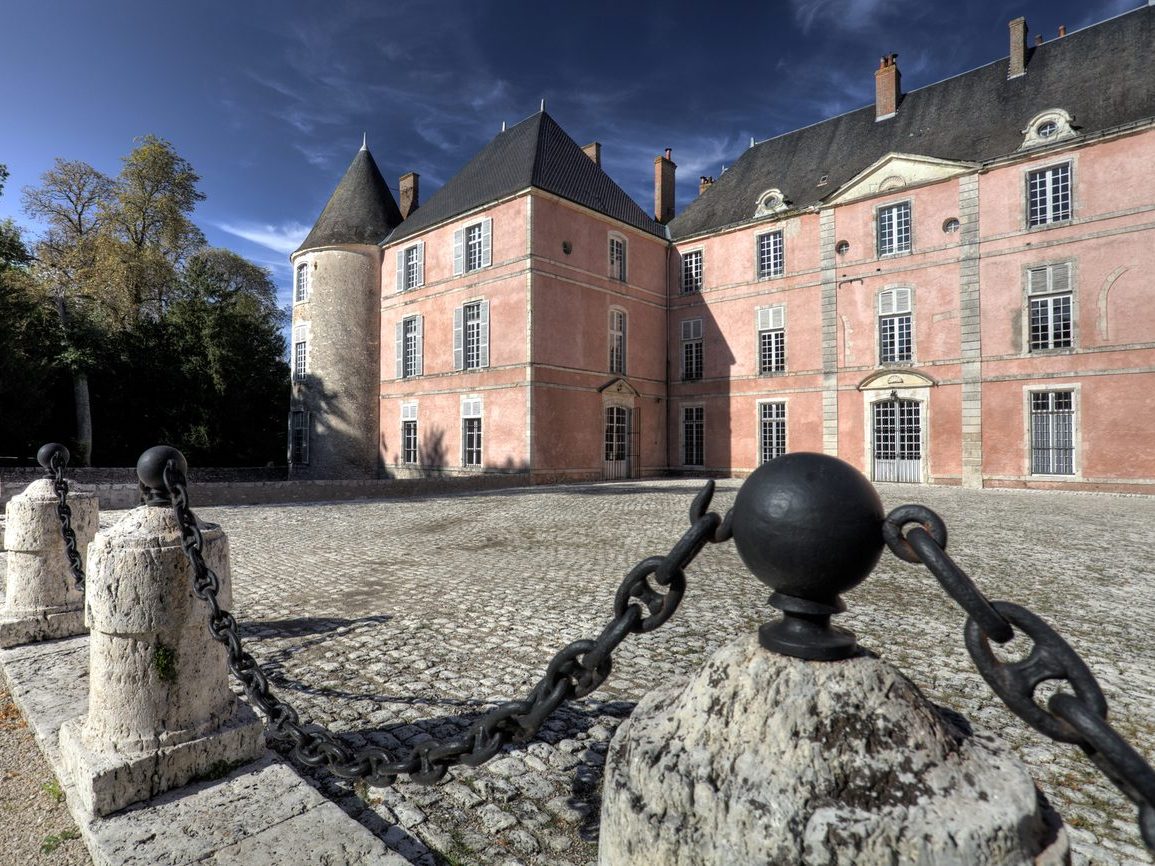
In 1784, last addition to the castle was made with the Neo-classical chapel and the two pavilions in the park.
During the French Revolution, Meung Castle was confiscated from the Bishops of Orléans and bought by one of the founders of the Banque de France. Since then, the castle has been a private residence open to visitors.
The castle of Meung-sur-Loire was listed as a historic monument by the French State in 1988 and is part of the Unesco World Heritage Site covering the Loire Valley.
Visiting the castle
Meung Castle first appears to the visitor as a medieval and austere fortress from the 12th and 13th centuries.
However, the rear façade opening onto the gardens shows a completely different view with its pink plaster and opulent architectural character from the 18th century.
Under the castle are the dungeon, a vaulted chapel and torture rooms from the Middle Ages which still display the torture instruments such as one used for the water torture.
![Meung-sur-Loire © Manfred Heyde - licence [CC BY-SA 3.0] from Wikimedia Commons](https://frenchmoments.eu/wp-content/uploads/2013/10/Meung-sur-Loire-03-©-Manfred-Heyde-licence-CC-BY-SA-3.0-from-Wikimedia-Commons.jpg)
It is possible to take a guided tour of the interior with the visit to the kitchen, the impressive towers with their spiral staircase, finely furnished rooms, the 18th-century Neo-Classical chapel and the surprising Bishops’ bathroom.
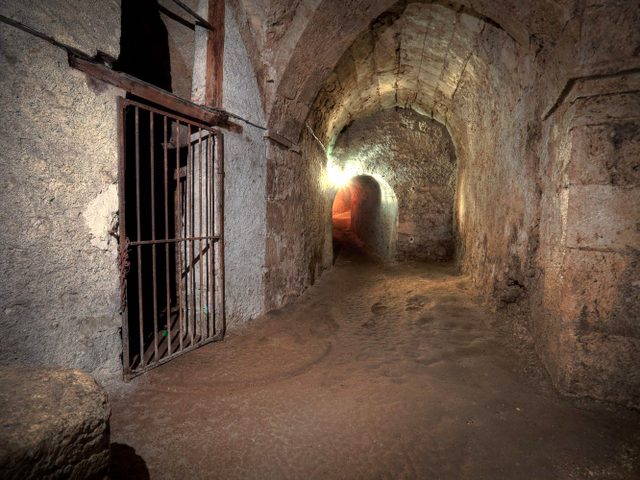
Also accessible are the underground parts of the castle which include a vaulted chapel and the dungeon where prisoners were held (such as François Villon), tortured or left to die.
![Meung-sur-Loire © Manfred Heyde - licence [CC BY-SA 3.0] from Wikimedia Commons](https://frenchmoments.eu/wp-content/uploads/2013/10/Meung-sur-Loire-©-Manfred-Heyde-licence-CC-BY-SA-3.0-from-Wikimedia-Commons.jpg)
The park encircling the castle extends over 7 hectares. Featuring green lawns and woods, they provide a peaceful stroll in the shade of centuries-old lime trees.
English-French Vocabulary
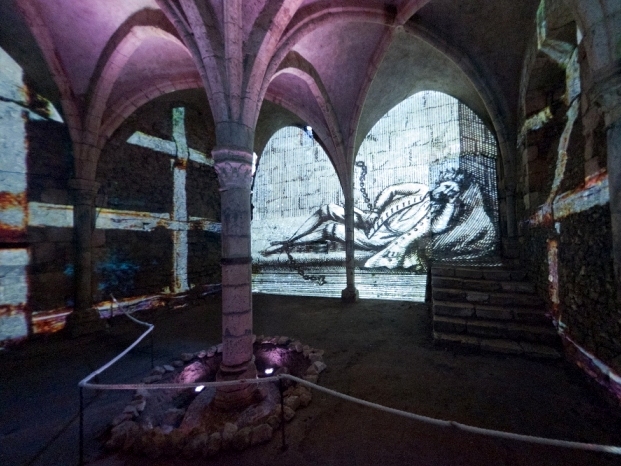
(f) for féminin, (m) for masculin, (adj) for adjective and (v) for verbs
- bishop = évêque (m)
- cannon = chanoine (m)
- castle = château (m)
- chapel = chapelle (f)
- drawbridge = pont levis (m)
- dungeon = oubliettes (f,p)
- façade = façade (f)
- fortress = forteresse (f)
- French Revolution = Révolution Française (f)
- garden = jardin (m)
- Hundred Years War = Guerre de Cent Ans (f)
- Joan of Arc = Jeanne d’Arc
- kitchen = cuisine (f)
- lime tree = tilleuil (m)
- Loire Valley = Vallée de la Loire (f)
- Middle-Ages = Moyen Âge (m)
- park = parc (m)
- pavillon = pavillon (m)
- prison = prison (f)
- spiral staircase = escalier à vis (m)
- torture = torture (f)
- Wars of Religion = Guerres de Religion (f,p)
- World Heritage Site of Unesco = Site du Patrimoine Mondial de l’Unesco (m)
For more information about the castle of Meung-sur-Loire, visit the castle’s official website.
Featured image: Meung-sur-Loire © Manfred Heyde – licence [CC BY-SA 3.0] from Wikimedia Commons

![Meung-sur-Loire © Manfred Heyde - licence [CC BY-SA 3.0] from Wikimedia Commons](https://frenchmoments.eu/wp-content/uploads/2013/10/Meung-sur-Loire-02-©-Manfred-Heyde-licence-CC-BY-SA-3.0-from-Wikimedia-Commons1.jpg)


